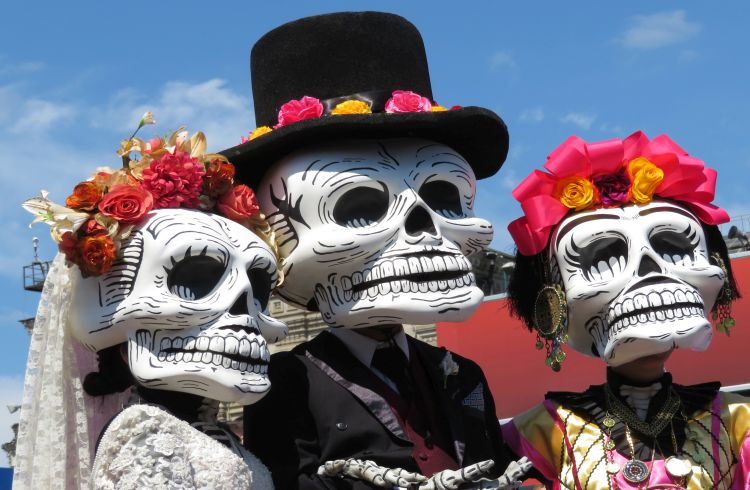What is Day of the Dead?
A celebration of the dead and the living things
According to tradition, the heavens open on the Day of the Dead and departed souls briefly return to earth.

img credit unsplash
Every year, Mexicans gather at cemeteries to remember their deceased family members, in what is one of the country’s most important celebrations. According to tradition, the heavens open and the souls of the dead return to earth.
Here’s everything you need to know about Day of the Dead:
What is the Day of the Dead?
It is not just for one day. In fact, it is a two-day festival that is traditionally celebrated on November 1 and 2, where families welcome the spirits of their deceased relatives for a short reunion that includes food, drinks and even toys at the altar, which all fascinate. Spirit on vacation to visit.
It is marked as a celebration rather than a solemn affair, a time when the living and the dead are believed to be connected.
“It’s a celebration. It’s sad when our relatives die, but these days, we want to show them that we remember them with joy,” Yorosle Delgado told Al Jazeera.
“We dance, we sing – they have to feel welcome.”
Depending on the location, celebrations may begin on October 28, and some places celebrate the day on November 6.

img credit unsplash
How did the festival originate?
The celebration is believed to be a pre-Hispanic tradition that came from indigenous communities thousands of years ago.
For the Aztecs, death was temporary and spirits could return and visit. According to some analysts, after the arrival of the Spanish in the 16th century, those traditions were mixed with the Catholic calendar and are now celebrated alongside All Souls Day.

img credit unsplash
How is the day celebrated?
In many parts of Mexico, families will spend November 1 remembering children, often referred to as “angelitos” (little angels), by decorating their cemeteries with toys and balloons. On November 2, they will celebrate All Souls Day, dedicated to adults who have died.
Families build “offered” (altars) over the graves of their loved ones. They also use sempasuchil flowers (marigolds), as they are believed to help them return from the cemetery to their family home.

img credit unsplash
Others write short, satirical poems, also called “calaveras” (skulls), symbolizing friends who describe their amusing habits and pepper them with funny anecdotes.
The skull, which represents the cycle of life, is the major symbol of the day. A sugar or chocolate skull can be given as a gift to both the living and the dead. Also popular is pan de muerto, a bread made in different shapes, often decorated with white frosting to represent the image of twisted bones.

img credit unsplash
How are the altars (ofrendas) built?
While altars are an important element during the festival as they guide the spirits home, they also have elements that honor and appease the dead.
Altars usually include photos of visitors. They may have two tiers to symbolize heaven and earth, with a third tier to represent purification or the seven tiers of stairs to heaven.
The altars contain representations of the four elements. Water is meant to quench the thirst of visitors; A fire is burning in the candles whose light guides the spirit of the deceased; Earth is contained in food and other items peculiar to the dead; And the air is cut into designs with colorful paper.
Some Vedas include salt, which is believed to aid the departed in their journey to the afterlife.

